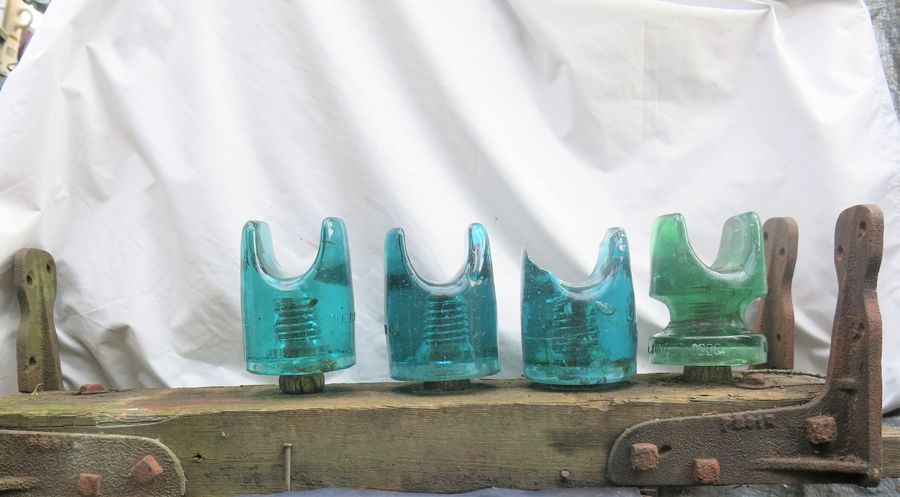
Following are descriptions and photos describing how the CD 267 and CD 267.5 glass insulators employed on the former Orange (elevated transit) line were used. Please refer to the next 12 postings. Built in 1898-1899 (originally the Boston Elevated Railway) and demolished in 1988, this line extended from Boston and continued westerly for a few miles. From its terminus in Boston (once outside the portal of the tunnel) CD 140 and CD 269 Jumbos were used between the tracks above the streets in great numbers beneath a rather wide catwalk between the incoming and outgoing tracks; [id=601770257]. This was the earliest section. At least 16 heavy copper conductors extended from its beginning to where the line intersected with Washington Street (a north-south route). At that point it is believed four DC cables continued westerly to its terminus a couple miles away. As the line was continued from Washington Street station glass insulators were employed as shown and discussed here. Probably owing to their fragility and breakage from their heavy cables that sat inside them, glass insulators were used for only about a mile westward. From that point heavy duty porcelain white cleats (dry process) were employed. These were used on the same type of "crossarms" as the pintypes except the arms were drilled for using the more durable cleats. These also were used where glass insulator breakage took place, which was prevalent around trackage bends rather than straight runs. Cracking and failure were mostly due to vibration as well as stresses to the glass via temperature changes, etc. [id=589494188] for a view of what another line looked like that used cleat style insulators. Note that the "crossarm" and its mounting theme is very similar to those used on the Orange Line that employed wooden pins and that it is separate from its supporting truss. The same "arm" was used for mounting cleats on the Orange Line. Because the wooden catwalk boards above the stretches of Orange Line cables and insulators were always shadowed and about 40 feet above, it was very difficult (just about impossible) in their day to photograph them. Only one of these arms is known (I own it) and no more than a couple or so exist and that have holes for using the forementioned porcelain cleats. These were made of heavily creosoted wood that still has its "aroma" if you sniff close enough! Their pins were installed without nails and were probably hammered-in with a rubber mallet. Very few of these specialty pins survived. Almost no two look the same owing to the whittling done so they would firmly insert into their pinholes. All of the pins known are in excellent condition, owing to their protected environment (catwalk boards immediately above) and the fact they seem to have some sort of oil preservative still in them. The Orange Line was demolished in 1988. Fortunately, I and a couple other local collectors were able to save some of the glass from it and that the demo contractor was cooperative in saving numerous examples. Please note that all CD 267.5 "straight sides" insulators have been located upon the elevated Orange Line and NOT in any of the Boston tunnels as far as I know. This glass insulator style was made only by the New England Glass Manufacturing Company (1899-1900 in Somerville, MA) and probably was a specialty order item for this line. Many CD 267 insulators also were employed. These include N.E.G.M. Co. marked ones in various shades of aqua and green. CD 267 N.E.G.M. examples have also been found in other locations, but the CD 267.5 was an Orange Line exclusive as far as I know. Of interest, green CD 267 N.E.G.M. Co. insulators in various states of condition and shades from light lime to rich yellow-green were located along a very short stretch of the Orange Line suggesting they came from the same glass manufacturing runs and probably the same barrels, too. In addition, CD 267 cables (some unembossed and others lettered "No.4 Cable") in aqua glass manufactured by Brookfield also were located on this line. Most CD 267.5 N.E.G.M. Co. examples found were aqua. The CD 267.5 green shades and those that were deformed or those with lots of bubbles (mostly aqua ones) were highly uncommon. |